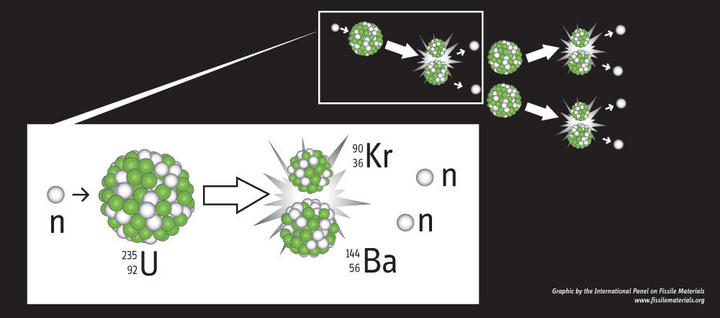Explosive chain reaction
An explosive fission chain-reaction releases enormous amounts of energy in one-millionth of a second. A neutron is absorbed by the nucleus of a fissile atom (uranium-235 in this example), which splits into two fission products (barium and krypton in this example). Additional neutrons are released in the process, which can set off a chain reaction in a critical mass of fissile materials. The energy set free is carried mainly by the fission products, which separate at high velocities. The chain reaction proceeds extremely fast; in a millionth of a second there can be 80 doublings of the neutron population, fissioning one kilogram of material and releasing an energy equivalent to 18,000 tons of high explosive (TNT).
